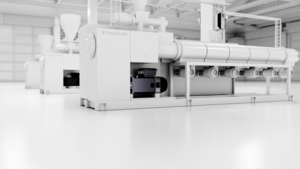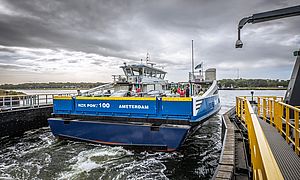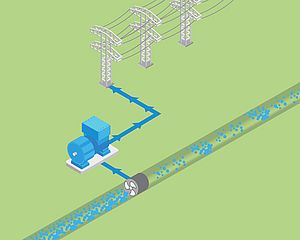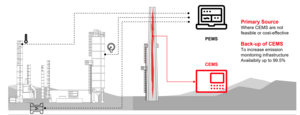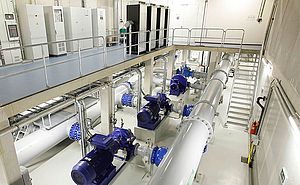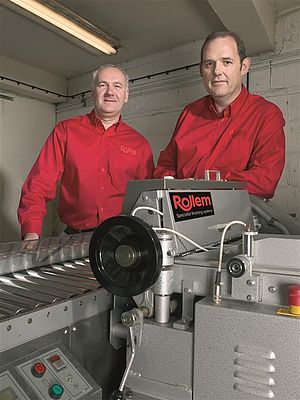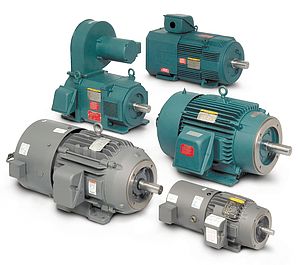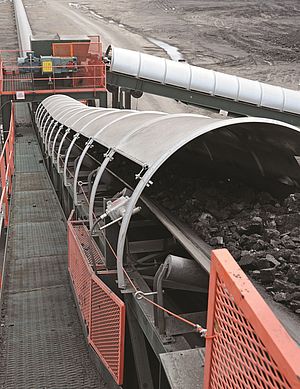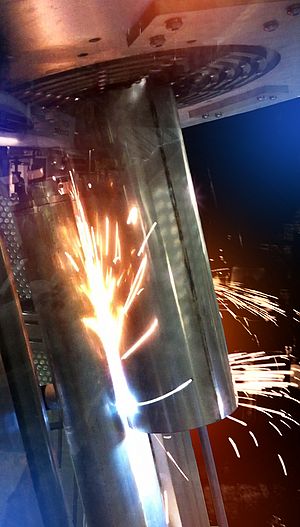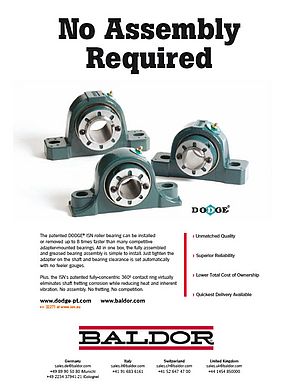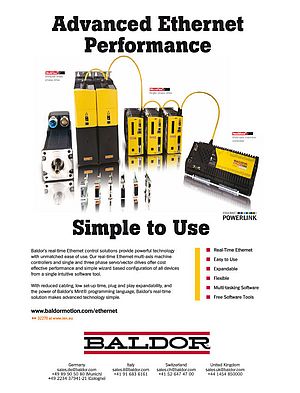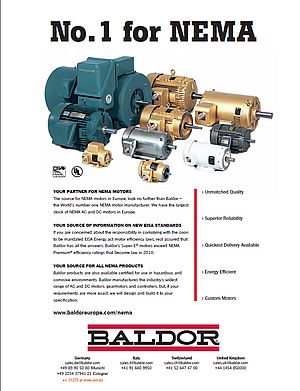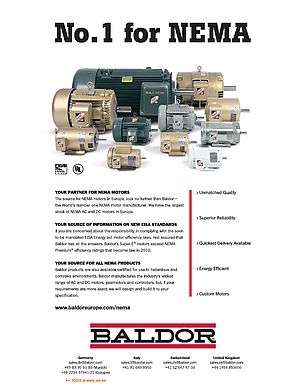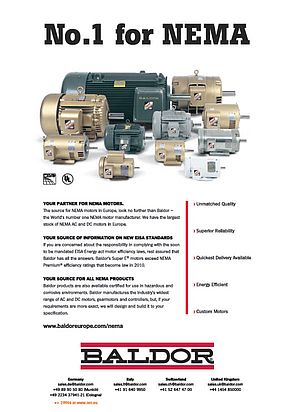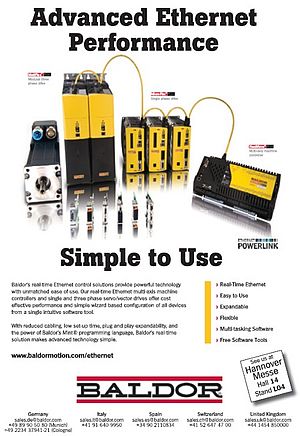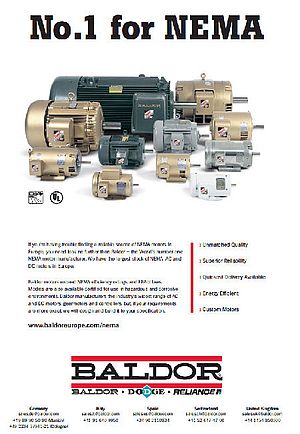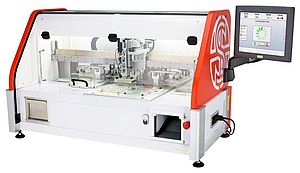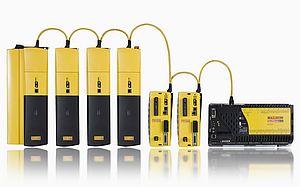By using the deterministic Powerlink industrial Ethernet networking technology for real-time multi-axis synchronization, Mtuft machines seta new industry standard for speed, accuracy and flexibility. They can produce a new tufted carpet sample in just 20 minutes, including setup time - a task which takes at least a day on conventional carpet sample machines or on production machines.
Modra Technology is a world leader in the design, manufacture and supply of carpet sample machines. Founded in 1991, the company initially produced error-detecting sensors for increasing the efficiency of Axminster looms. During the course of this work it identified the need for product development machines for carpet designers and manufacturers. At that time, carpet samples were either produced by hand - a very slow process - or by using volume production machines, which was expensive and disruptive.
Modra Technology's first machine, known as the Kibby, was designed to produce high quality samples of Axminster and woven carpets, and is a worldwide success; to date, the company has sold over 150 units in 24 countries. The latest, fourth-generation versions of these machines can accommodate very high needle insertion rates of 5 per second- and are capable of producing a complete 500 x 500mm sample of Axminster carpet in just over 1 hour. When it came to developing a machine to produce samples of tufted carpet, Modra Technology initiated the Mtuft project and set itself some ambitious design goals. Prime among these was the need to come up with a design that would be flexible enough to simulate as wide a range of carpet production machines as possible, in order that the samples would provide an accurate representation of the finished carpets produced by various manufacturers' machines. To this end, the company chose touse an all-servo design, with a sophisticated control system based on Ethernet Powerlink based products.
According to Tim Modra, Managing Director of Modra Technology, "Complex high speed multi-axis applications such as this traditionally involve a huge amount of wiring - mainly on the control side, and especially for encoder feedback. Obviously, over the years we have been keeping an eye on trends in decentralized motion control and various strategies to help reduce the amount of machine wiring, but we had dismissed non-deterministic Ethernet as being unsuitable for critical real-time automation control purposes. So when Baldor launched its Ethernet-based motion controller and servos, which are designed specifically to overcome the real-time data transmission limitations of standard Ethernet but still use stan-dard Ethernet cable between the controller and the drives, we were keen to try them out."
By managing message exchanges in a precise and defined sequence to ensure that only one node communicates at any one time, Powerlink adds determinism to Ethernet communications- the protocol guarantees that all time critical data is transferred within configurable, isochronous bus cycles. This prevents the type of data collisions associated with standard Ethernet and dispenses with the need for bus arbitration schemes, thereby reducing data transmission time overheads significantly.
The Mtuft carpet sample machine uses a combination of pneumatic and electrical actuation technology. There are nine axes of electrically operated movement, all controlled by a Next Move e100 real-time motion controller. Seven axes are driven by MicroFlex e100 single-phase AC servo drives and BSM servomotors, using Ethernet Powerlink for all communication between the between the controller and the drives, and five of these axes use interpolation again, handled entirely over Powerlink. The remaining two electrically-driven axes use small DC motors.
Mtuft machines are freestanding units designed for autonomous operation, though their Ethernet architecture lends itself to factory-wide integration and remote, internet based diagnostics. The built-in host computer is an industry standard PC, running the machine control software and Ned Graphics' Vision Tuft software for creating new carpet sample designs. Each carpet sample design is exported by the Vision Tuft software in Open Tuft format, and downloaded via Ethernet to the Next Move e100 controller line by line.
The machine holds the web - the backing material for the carpet sample - in tension on two backing drums driven in ratio gear mode. Two reciprocating heads, positioned above and below the web, traverse the width of the material. The needle motor provides the reference signal for all interpolated axes, and the tophead employs a large servo for needle actuation, using a driven-spline arrangement to save weight on the head itself. Each head is driven in synchronism, and they can also be moved in a way to simulate production of carpet samples with needle shift 'zigzag' patterns.
Tim Modra points out that the use of high speed interpolation on the two main head drive servos provides a key advantage over conventional mechanical systems. "We effectively have a software calibrator which enables us to put a variable offset into the system. So instead of using precision mechanical gears and cams - which are expensive, time-consuming to configure and inherently inflexible -we can now calibrate our machines digitally,which is easily done using Baldor's Mint programming language. This all-electronic approach has enabled us to create a physically compact machine with a small footprint, and helps to reduce machine build time and cost significantly. It also provides us with a highly adaptable platform for future product development. The ability to purchase all the electrical drive products that we require - including the servo motors, controllers, cables and filters- direct from Baldor means that we have a very efficient supply chain, which further helps shorten our time to market."
Modra Technology's Mtuft machines look set to achieve for tufted carpet samples what the Kibby has done for Axminsters. A single machine can produce 1 metre or 2 metre wide samples of cut/loop and cut/multi pile loop carpets of any length in single or multiple colours, as wellas samples of servo loop scroll carpets, with servo control of the pile height and up to eight colours. The machine can accommodate yarn gauges from 1.5 to 6.3 mm and uses a single needle per colour, which means that only one cone of each colour yarn is required. Conventional sample machines can require up to 200 cones. This ease of set-up, combined with avery high stitching speed of up to 30 per second, enables a typical new carpet sample to be produced in just 20 minutes.




